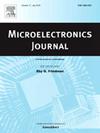Design and optimization of discrete-time delta-sigma modulators
IF 1.9
3区 工程技术
Q3 ENGINEERING, ELECTRICAL & ELECTRONIC
引用次数: 0
Abstract
—For high-precision sensor applications, high dynamic range discrete-time delta-sigma modulators (DSMs) are key components. For the design of high dynamic range DSMs, the system architecture is crucial. The system requires strong in-band noise suppression for small input amplitudes and a large maximum stable amplitude (MSA) for large input amplitudes. This article presents the system design and optimization method of discrete-time delta-sigma modulator. It provides a detailed discussion on the behavior-level modeling and characteristics of low-bit and multi-bit quantizers. Additionally, design considerations of quantizers in DSM systems are analyzed. An approach for optimizing DSM systems by leveraging the properties of quantizers is proposed, along with a simple optimization case study. Potential future application scenarios are also presented. The purpose of this article is to offer design guidelines for developing well-performing DSMs systems.
求助全文
约1分钟内获得全文
求助全文
来源期刊

Microelectronics Journal
工程技术-工程:电子与电气
CiteScore
4.00
自引率
27.30%
发文量
222
审稿时长
43 days
期刊介绍:
Published since 1969, the Microelectronics Journal is an international forum for the dissemination of research and applications of microelectronic systems, circuits, and emerging technologies. Papers published in the Microelectronics Journal have undergone peer review to ensure originality, relevance, and timeliness. The journal thus provides a worldwide, regular, and comprehensive update on microelectronic circuits and systems.
The Microelectronics Journal invites papers describing significant research and applications in all of the areas listed below. Comprehensive review/survey papers covering recent developments will also be considered. The Microelectronics Journal covers circuits and systems. This topic includes but is not limited to: Analog, digital, mixed, and RF circuits and related design methodologies; Logic, architectural, and system level synthesis; Testing, design for testability, built-in self-test; Area, power, and thermal analysis and design; Mixed-domain simulation and design; Embedded systems; Non-von Neumann computing and related technologies and circuits; Design and test of high complexity systems integration; SoC, NoC, SIP, and NIP design and test; 3-D integration design and analysis; Emerging device technologies and circuits, such as FinFETs, SETs, spintronics, SFQ, MTJ, etc.
Application aspects such as signal and image processing including circuits for cryptography, sensors, and actuators including sensor networks, reliability and quality issues, and economic models are also welcome.
 求助内容:
求助内容: 应助结果提醒方式:
应助结果提醒方式:


